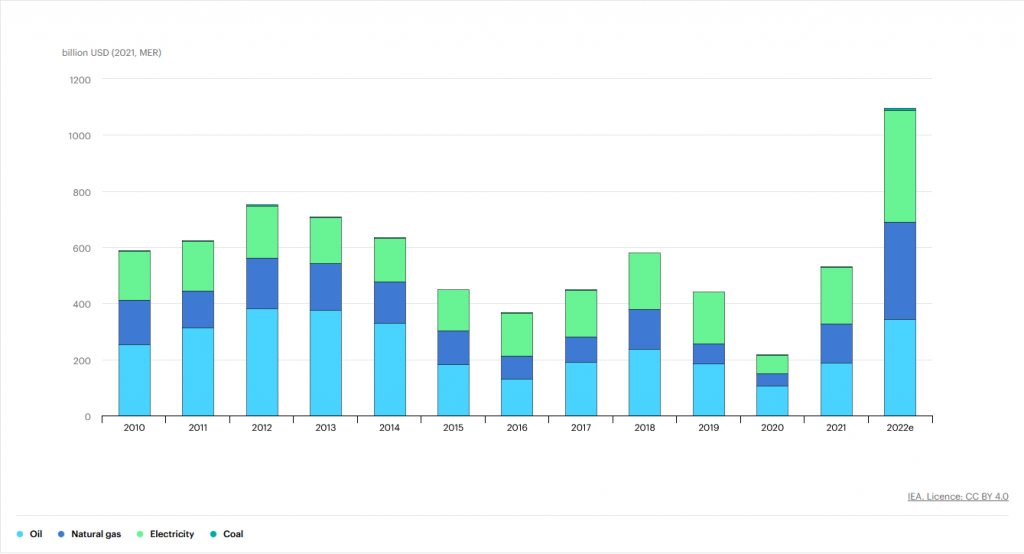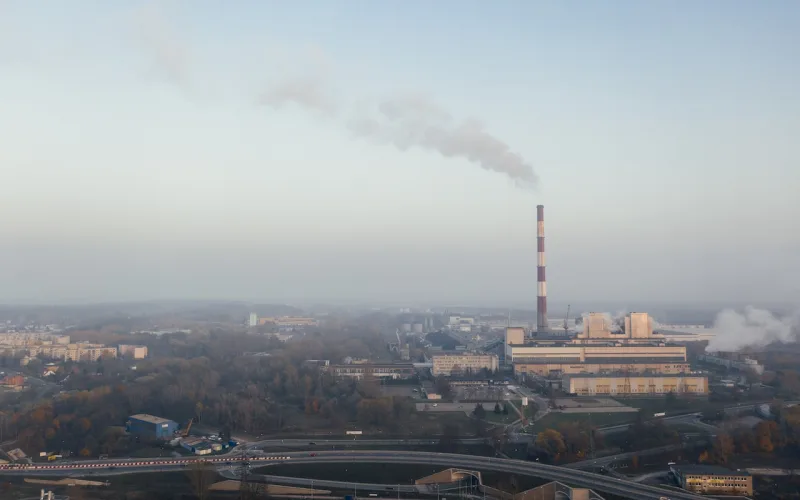Last Updated on June 1, 2023 by Ecologica Life
Today I saw a poster calling for an end to fossil fuel subsidies. Unfortunately, even if we wanted to, we couldn’t stop all fossil fuel subsidies today without a dramatic impact on the economy.
That said, the climate crisis is an issue that needs to be taken seriously. The consequences of not curbing our fossil fuel addiction include rising sea levels and increased air pollution.
This article provides a brief overview of how we can reduce fossil fuel subsidies while also putting people, the economy, and the environment first.
Table of Contents
Fuel Subsidy Meaning
Energy subsidies refer to various measures taken to maintain prices below market levels for consumers or above market levels for suppliers. This helps to ensure that the consumer can afford to pay for energy and that the supplier has an incentive to continue to supply energy because it will make a profit.
Energy is undeniably valuable and necessary in today’s world. Without it, you would not be able to carry out many of your daily activities, including reading this article, without it. For this reason, it is necessary for governments to intervene to maintain the cost of energy sources.
Subsidies are therefore a form of financial support from governments and can be provided in a number of ways. For example, subsidies can take the form of direct cash transfers to suppliers, or customers. They can also include tax exemptions and other indirect means of controlling fuel costs.
Fossil Fuel Subsidies vs Renewables
In 2020, the International Renewable Energy Agency (IREA) monitored a total of $634 billion in energy subsidies.
It found that approximately 70% of these subsidies were allocated to support fossil fuel-related activities. Around 20% of the subsidies were directed towards promoting renewable energy production, while 6% went to biofuels. Nuclear energy received just over 3% of the total subsidies.

Managing the Transition to Renewables
Many people want to promote the inevitable transition to renewable energy by restricting the supply of fossil fuels. It is easy for activists to targeting the supply of fossil fuels. But what happens when we restrict the supply of energy? Of course, prices go up. We saw this in Europe when the war in Ukraine started. What this translates to is the poorest in society being hit the hardest by the increased cost of energy.
You might argue that the climate crisis will also increase suffering, and that argument has merit. But as people, as human beings, we should try to limit the amount of net suffering in the world if we can.
Many governments are currently walking a tightrope. Governments that try to remove fossil fuel subsidies are often criticised and become unpopular, which can even lead to protests and riots. Governments that don’t are criticised for not doing enough to tackle climate change.
It’s clear that the transition to green energy won’t happen overnight. Managing this transition period is quite difficult. Governments must offer incentives for fossil fuel companies to make up the energy gap that renewables don’t, while at the same time transitioning to renewables at a suitable pace that mitigates climate change and doesn’t harm the economy and low-income households.
There is a belief that fossil fuel subsidies benefit the richest in society because they have the largest carbon budget. Between 1990 and 2015, the richest 10% of EU citizens were responsible for 27% of the EU’s CO2 consumption emissions, the same amount as the poorest 50% of EU citizens. The richest 1% alone accounted for 7% of emissions.
If we are talking numbers alone, yes, the richer in society save more money from fossil fuel subsidies, but that is because they spend more money on fossil fuels, more cars, flights, and so on. But the richest in society have more disposable income than the poor. If you increase the price cap on fossil fuels, you can benefit from increased taxes from the rich who can afford to pay them. But the poor, who do not have disposable income will suffer drastically from the increased energy prices. That being said, subsidies are rarely well-targeted to protect vulnerable groups either.
It makes sense therefore to reduce fossil fuel subsidies and redirect the increased revenues generated to the poor and middle class. The richest in society will have to help bear the brunt of the transition to green. So, if we raise the price cap, the increased revenue should go directly to support the poor who are unable to pay for the new prices. But how do you distribute and allocate this money fairly?
It could be done fairly if the allocation of funds is a transparent process. And by providing grants and interest free loans to low-income households for energy. But this option has its risks, and if it is not properly managed it could once again disproportionately affect the poor. It is easy to understand why citizens don’t trust governments to manage such a process.
CAN Europe published a report in March 2023 entitled “Fossil Fuel Subsidies in the EU“, which provides realistic action points for phasing out fossil fuel subsidies. The International Monetary Fund also provides guidance on what the key elements for managing a gradual reform of fossil fuel subsidies.
The fossil fuel industry currently earns an estimated $1 trillion a year, and wields considerable political influence around the world. This makes reducing subsidies even more difficult than it should naturally be.
Focusing on Renewable Energy
Relying on governments to cut fossil fuel subsidies likely won’t be fast enough for climate change. Is there another way to speed up the transition to green energy? Well, the other less attractive option for activists is to lobby governments to innovate, promote and invest in green technologies and the infrastructure to support them. This option is less attractive because it is more complicated and there is no big bad wolf to slay.
Green technology is slowly but surely taking over more and more of the energy demand. Over time, Consumers and investors alike will tend to invest their money into green energy. Inevitably, all energy will be green. But this is a slow process, and we need to make changes quickly if we are to halt or even reverse climate change. Can we rely on market and economic changes to drive the transition to green energy fast enough?
Hypothetically, we can if we get everyone on board, especially higher income households. There is the added benefit that if we do it this way the poorest in society won’t need to suffer the most during this period of change.
But how can we get everybody on board? Climate awareness is a trend that is growing overtime, especially among younger generations. Climate activists should broaden their efforts to also include promoting and investing in green technologies to make them cheaper and more accessible as fast as possible.
I’ll give you an example, when Tesla cars first came out, they were very expensive and only the moderately rich could afford them. Now they have come down in price and now some models are similar in price to that of a typical car. This is the norm when a new technology is developed.
Instead of throwing tomato soup at Van Goph’s paintings, we need to take a more serious approach. New green technologies limit the influence of the fossil fuel industry. By promoting them and investing in their innovation, we are driving a transition that limits the suffering of the poorest in society. I am not just talking about green energy technologies such as electric cars, but also promoting energy efficiency such as new innovations in insulation.
The economy is something we all depend on; we can’t neglect it in our climate crisis struggle. Instead, we must use it to our advantage to accelerate the transition to clean energy.








